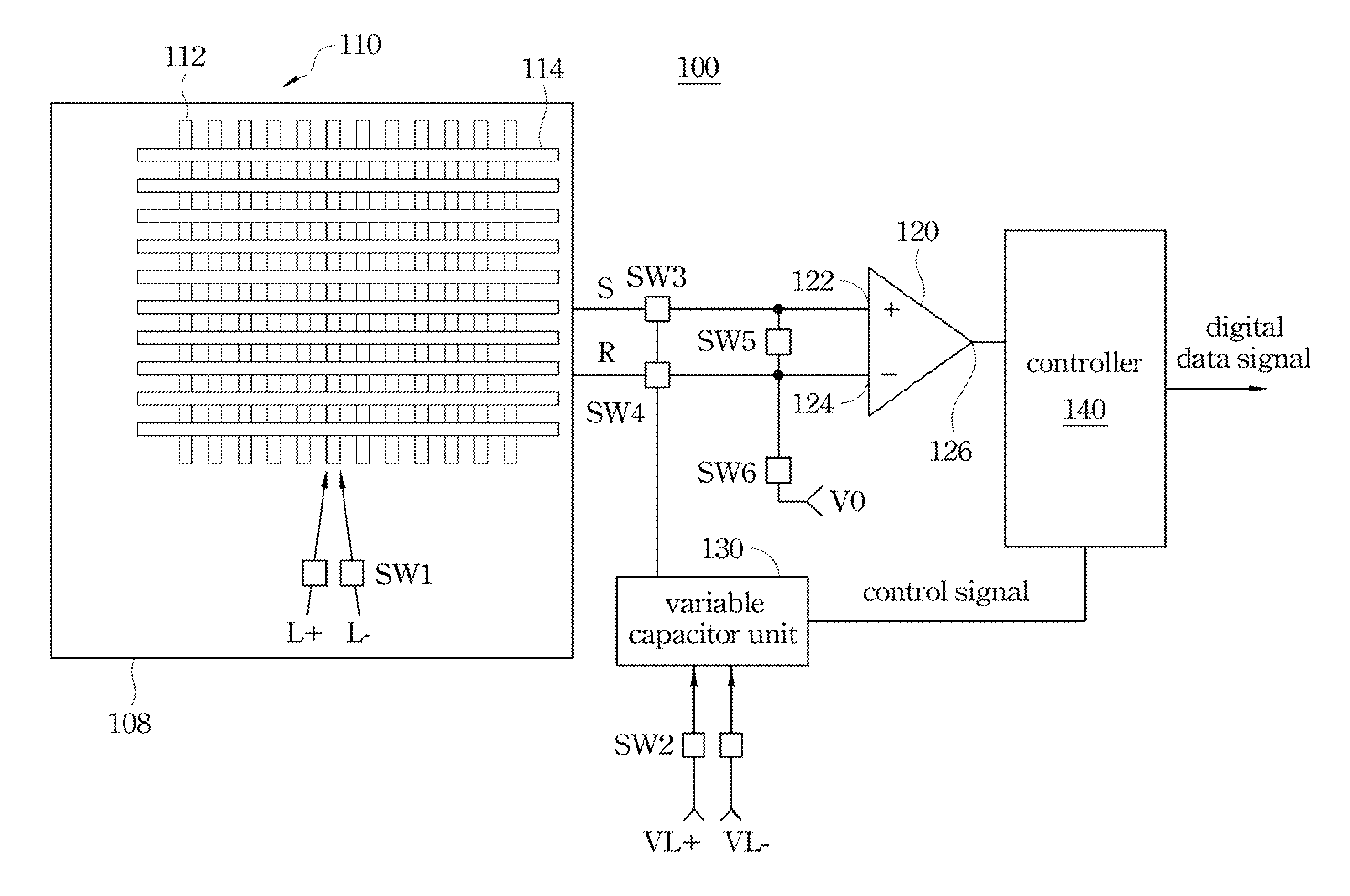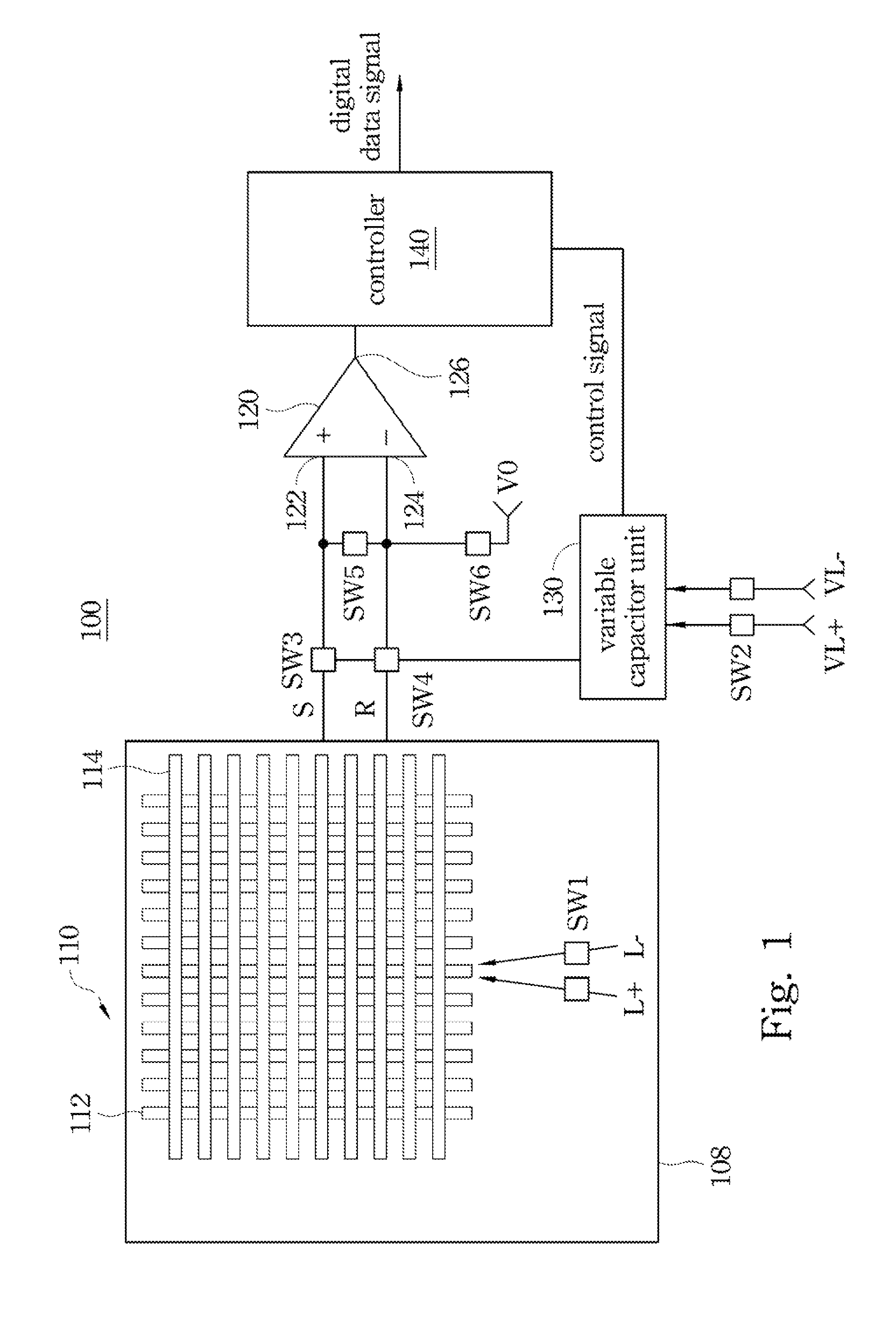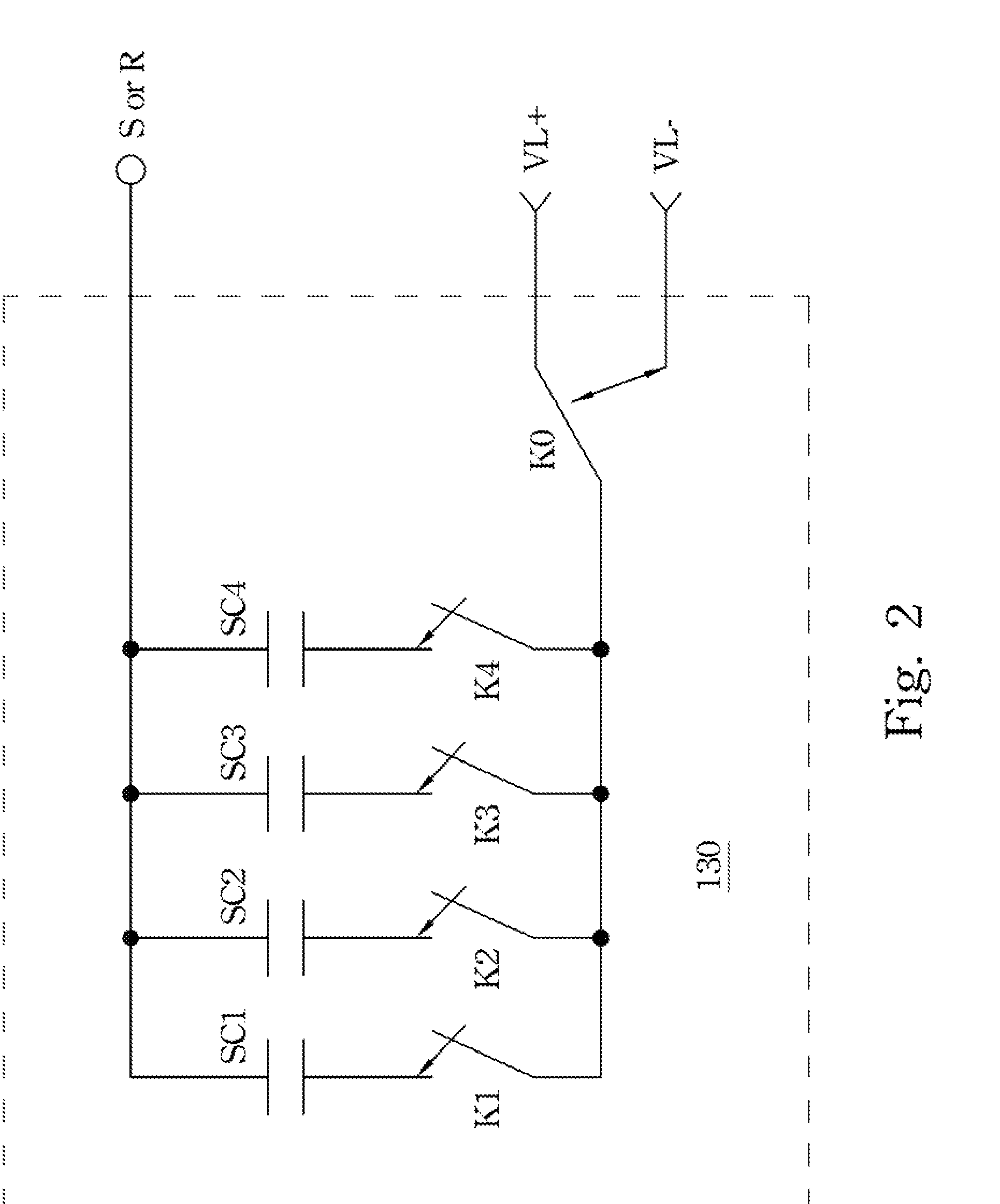Touch sensing device
a touch sensing device and touch technology, applied in the field of touch sensing devices, can solve the problems of high manufacturing cost inability to effectively reduce the size of inability to flexibly adjust the touch sensing operation performed by the touch sensing device based on extrinsic practicality
- Summary
- Abstract
- Description
- Claims
- Application Information
AI Technical Summary
Benefits of technology
Problems solved by technology
Method used
Image
Examples
first embodiment
[0025]FIG. 1 is a schematic diagram of a touch sensing device according to the present disclosure. As shown in FIG. 1, the touch sensing device 100 includes a touch sensing trace layout 110, a comparator 120 and a variable capacitor unit 130. The touch sensing trace layout 110 is configured for performing a sensing operation according to at least one first driving signal e.g., driving signal L+ shown in FIG. 1) in a sensing state, such that the touch sensing trace layout 110 outputs one or more sensing signals corresponding to a touch event (e.g., the touch sensing trace layout 110 is touched by finger, stylus pen, etc.). The comparator 120 includes a first comparator input 122, a second comparator input 124, and a comparator output 126, in which the first comparator input 122 and the second comparator input 124 may be electrically coupled to the touch sensing trace layout 110 respectively through a path S and a path R, for receiving the sensing signals outputted by the touch sensin...
second embodiment
[0046]FIG. 3 is a schematic diagram of a touch sensing device according to the present disclosure. As shown in FIG. 3, the touch sensing device 300 includes a touch sensing trace layout 310, a comparator 320 and a variable capacitor unit 330. The touch sensing trace layout 310 is configured for performing a sensing operation according to at least one first driving signal (e.g., the driving signal L+) in a sensing state, such that the touch sensing trace layout 310 outputs one or more sensing signals corresponding to a touch event (e.g., the touch sensing trace layout 310 is touched by finger, stylus pen, etc.). The comparator 320 includes a first comparator input 322, a second comparator input 324, and a comparator output 326, in which the first comparator input 322 is electrically coupled through the path S to the touch sensing trace layout 310 and configured for receiving the sensing signal outputted by the touch sensing trace layout 310, and the second comparator input 324 is ele...
PUM
 Login to View More
Login to View More Abstract
Description
Claims
Application Information
 Login to View More
Login to View More - R&D
- Intellectual Property
- Life Sciences
- Materials
- Tech Scout
- Unparalleled Data Quality
- Higher Quality Content
- 60% Fewer Hallucinations
Browse by: Latest US Patents, China's latest patents, Technical Efficacy Thesaurus, Application Domain, Technology Topic, Popular Technical Reports.
© 2025 PatSnap. All rights reserved.Legal|Privacy policy|Modern Slavery Act Transparency Statement|Sitemap|About US| Contact US: help@patsnap.com



